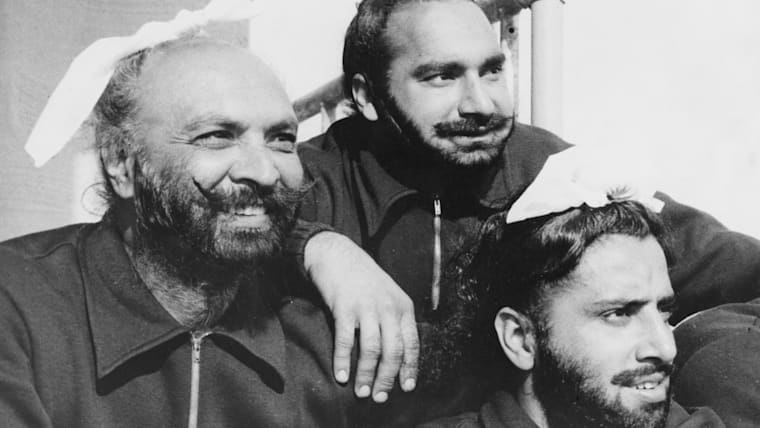News for 06 December 2020
All the news for Sunday 6 December 2020
FIH hand Asian hockey a boost
By Jugjet Singh
KUALA LUMPUR: Malaysia's hopes of qualifying for the men and women's World Cups received a boost after the International Hockey Federation (FIH) handed four slots to Asia for each tournament.
The national women's team, under coach Nasihin Nubli, might just make history if they can reach the semi-finals of the Asia Cup for a ticket to the 2022 Women's World Cup in Spain and the Netherlands.
Currently, Malaysia are ranked fifth in Asia behind India, Japan, China and South Korea.
Malaysia should easily qualify for the men's 2024 World Cup together with hosts India, South Korea and Japan through the Asia Cup.
The Asian Hockey Federation (AHF) have placed both the men and women's Asia Cup windows between November next year and January 2022.
"My team are gearing up for the Junior Asia Cup (on April 11-17 in Japan). We hope to finish on the podium to qualify for the Junior World Cup.
"It is something the Malaysian women have yet to achieve. My team are determined to break the barrier.
"After that, we will focus on finishing top four in the women's Asia Cup, which will earn us a World Cup spot," said Nasihin.
The men's team have featured eight times in the World Cup.
New Straits Times
One major Asian men’s nation will miss World Cup
S2H Team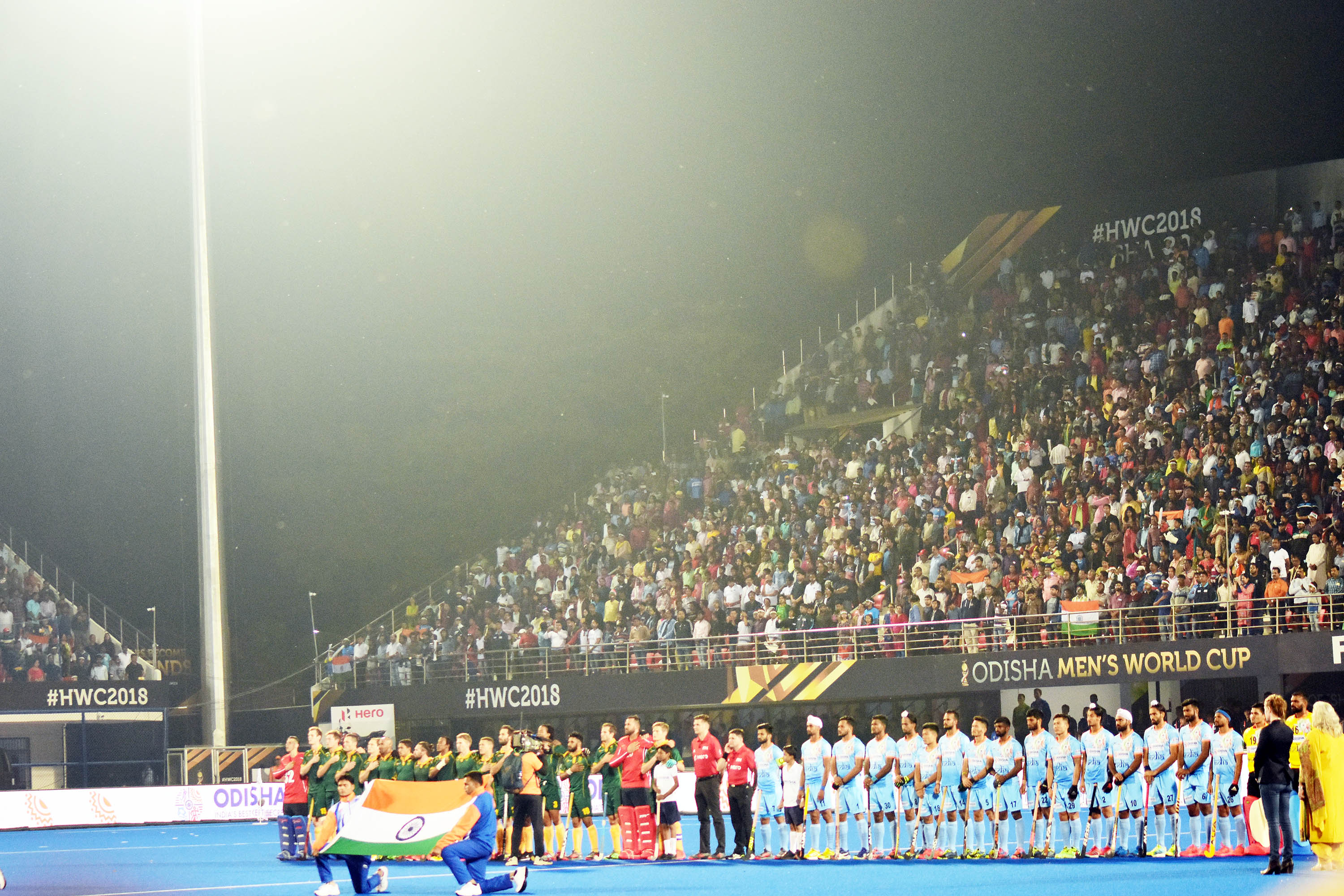
India will be hosting the next Men’s World Cup
The FIH announcement of the World Cup quotas for the men’s and women’s tournaments reveals that the apportionment of slots for the five continents have gone strictly by rankings.
There are seven European nations, four Asian, two Pan American, two from Oceania and one from Africa in the top 16 of the FIH rankings for men. In the women’s section, Europe has six, Asia four, Pan America three, Oceania two and Africa one.
This exactly complies with the quotas announced by the world body on its website on Friday. The World Cup field, for the next edition at least, have done away with qualifying rounds in wake of the Covid-19 pandemic which has ravaged the world and thrown sports schedules out of the window.
In the Asian context, India (World Ranking: 4) have been spared the anxiety of qualifying for the men’s tournament by playing hosts for the fourth time and second in succession. It would leave Malaysia (WR:11), Japan (WR: 15), South Korea (WR: 16) and Pakistan (WR: 17) to fight for three other slots after the FIH stated that the four quota slots for Asia will include the hosts. If India make the semifinals of the Asia Cup, then the other three last-four entrants would qualify. If India do not enter the semi-finals, the podium finishers would qualify while the fourth-placed team would miss out.
India’s women (WR: 9) , barring a sensational upset, can more or less be assured of qualifying for the World Cup. With four quota slots for Asia, the Indian women have the credentials to finish in the top bracket with China (WR: 10), South Korea (WR:11), and Japan (WR: 13). The nearest Asian rival is Malaysia (WR: 20).
In the European context, the big guns including Belgium, the defending champions, The Netherlands, England, Germany and Spain should have an easy run to the World Cup in both sections but France and Ireland cannot afford to let their guard down in the possible presence of Wales, Austria, Russia and Poland who could hope for an upset or two in the men’s section.
In the European women’s competition, The Netherlands, Germany, England and Spain should go through even as Ireland and Belgium watch their backs what with Italy and Russia waiting in the wings.
In the Pan Am men’s section, Argentina and Canada can more or less take their places for granted unless the USA have other ideas. As for the women, the three quota slots should see Argentina, Canada and USA through although Uruguay and Chile nurture some qualifying ambition.
The African men’s scenario will feature a tense face-off between South Africa and Egypt. In the women’s section, however, South Africa should cruise their way through to the World Cup.
Australia and New Zealand men’s and women’s teams may as well start packing their sticks for the World Cup with not a semblance of competition in Oceania.
The Men’s World Cup will be held from January 13-29, 2023, at Bhubaneswar/ Rourkela in India. The women’s event will be staged from July 1-17, 2022, in both The Netherlands and Spain.
It will be the second successive World Cup events for either gender to draw 16 nations – four more than the traditional 12. In the past, the only other time the World Cup involved 16 nations was at Kuala Lumpur and Perth, both in 2002.
In 2002, teams qualified directly by winning continental championships or by virtue of being hosts. The remaining slots were decided at a qualifying tournament with two highest ranked at Sydney Olympics who had not qualified directly booking World Cup places.
The apportionment of nations at the qualifying tournaments was done by coefficients based on FIH rankings. In 2018, the circuitous Hockey World League contributed the remainder of the World Cup field. If a nation qualified on more than one count, then the best ranked nation available would fill the slot.
Note: The display picture of the story features former FIH President Leondre Negre and Hero owner Pavan Munjal while releasing the logo for the 2010 World Cup. India then was hosting its only second World Cup.
Stick2Hockey.com
Spanish legend Xavi Arnau appointed new Japanese women’s coach
Former Club de Campo boss Xavi Arnau has been appointed the new Japanese women’s coach as they look forward to the final run-in to the Tokyo Olympic Games in 2021.
He succeeds Anthony Farry who stepped down in October, making the move from his current base in Belgium where he was most recently T1 at White Star’s women and Racing Club de Bruxelles’ men.
It is the latest step in a decorated career which saw him land 207 caps and 127 goals for Spain, including three Olympic campaigns in 1992, 1996 and 2000, including silver at Atlanta. He also won World Cup silver in 1998 in Utrecht.
On the coaching front, he has been active for over 20 years, working with the Spanish women’s team when they won European silver in 2003 while he was a high performance coach with the Spanish men from 2009 to 2013, also heading up their Under-21 men’s programme for the Junior World Cup.
On the club front, he won multiple titles with Club de Campo with a highlight seeing the Madrid club reach the final of the Euro Hockey League in 2011.
With the Japanese side, he is straight into action with an important selection event on January 6, 2021 to assess potential players for the Olympic campaign.
Speaking about the new role, Arnau said: “As the head coach of the “Sakura Japan’ team, I am grateful to everyone who has high expectations. We will do our best to bring the team to the best possible results at the Tokyo 2020 Games. The Tokyo 2020 Games are home games, so I think this is a great opportunity to get good results.
“Sakura Japan is a really excellent team and I can’t wait to start working early to achieve great success with them.”
Euro Hockey League media release
Half of Australian women's hockey team reportedly considering strike eight months before Tokyo 2020
By Liam Morgan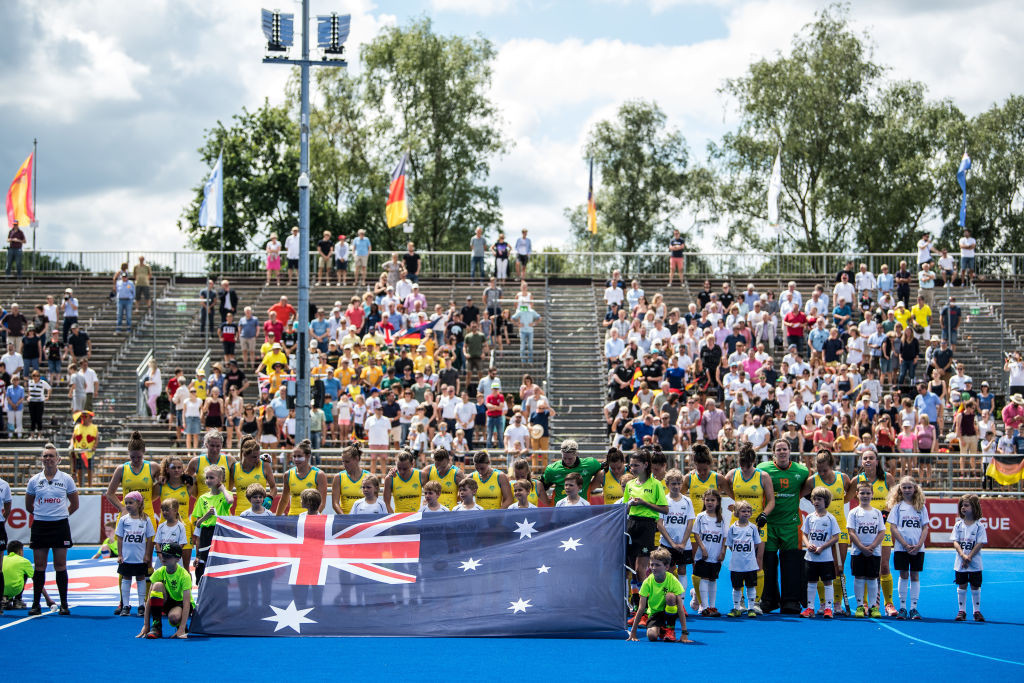
Australia's women's hockey team is embroiled in a dispute with senior officials ©Getty Images
Up to half of the Australian women's hockey squad are reportedly considering a strike just eight months before the rearranged Tokyo 2020 Olympic Games are due to open amid a protracted dispute with senior team officials.
According to the Australian Associated Press (AAP), the axing of 2019 International Hockey Federation goalkeeper of the year Rachael Lynch and former captain Georgina Morgan from the 2021 squad is at the heart of the latest row between the team and management.
The AAP reported about half of the team were so aggrieved that they have threatened to refuse to play.
It has been reported the Australian side, ranked second in the world, have grown increasingly frustrated and angry at officials including high-performance director Toni Cumpston.
Hockey Australia has also begun an independent inquiry into allegations of a toxic culture within the sport in the country, according to the AAP.
Two-time Olympian Nicole Arrold has raised concerns regarding the culture, while claiming bullying allegations had been handled poorly and the leadership of coach Paul Gaudoin had been "chaotic".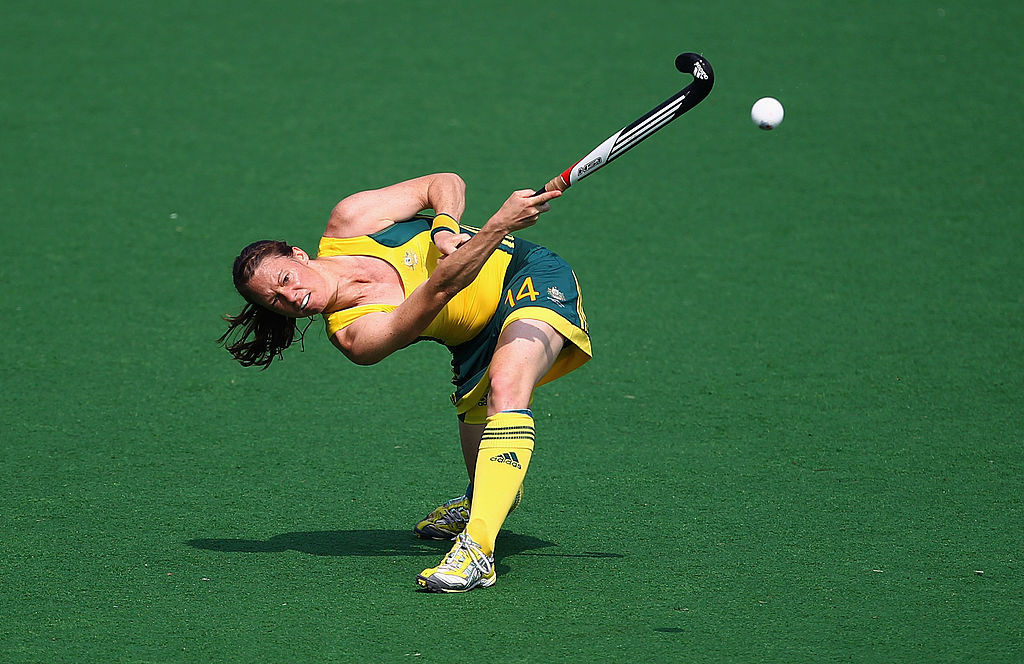
Former player Nicole Arrold has raised concerns regarding the culture within Australian hockey ©Getty Images
Matt Favier, chief executive of the national governing body, has backed Cumpston and Gaudoin, despite the growing unrest within the team.
"We’ve had our challenges along the way to where we are at this time, and Toni is providing excellent leadership to this group," Favier told AAP.
"Look, I don’t expect every player to be sending Christmas cards to every member of the leadership team.
"That’s not how I think about things.
"In my opinion, her relationship is professional with the player group, as it needs to be.
"Toni is firmly supported by me as the chief executive and is firmly supported by the board."
Australia has won three Olympic gold medals in women's hockey, the last coming on home soil at Sydney 2000.
The Hockeyroos also finished second in the inaugural edition of the FIH Hockey Pro League in 2019.
Australia booked a place at Tokyo 2020, postponed to next year because of the coronavirus pandemic, through the Olympic qualifiers.
Inside the Games
Still without a coach
By Jugjet Singh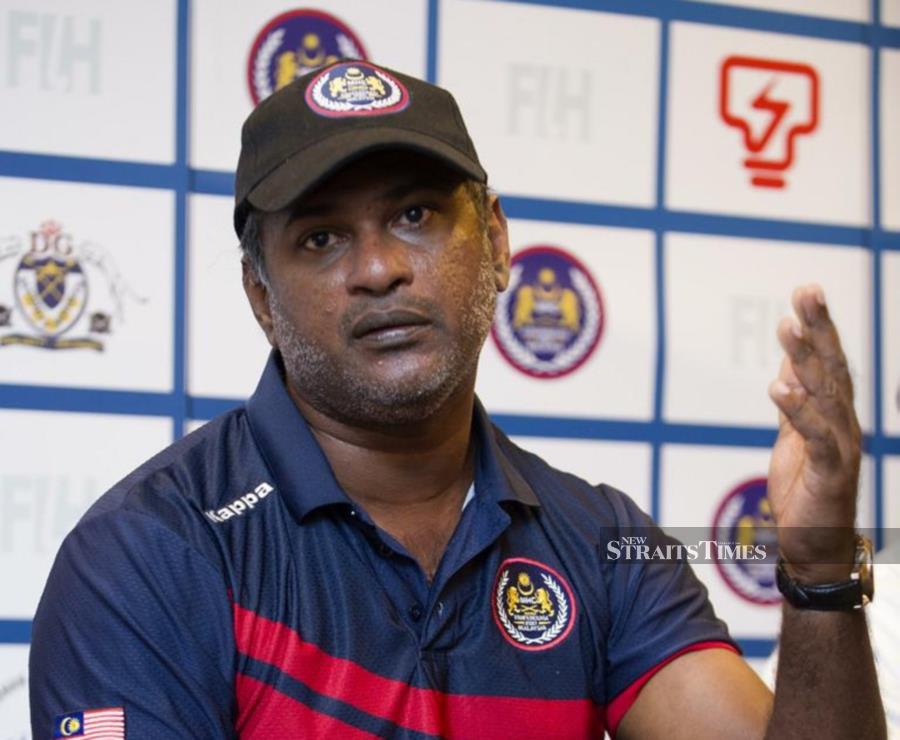
K. Dharmaraj
THE Malaysian national league is starting next month but powerhouse Terengganu Hockey Team (THT) are far from ready.
They are without a coach and they have yet to sign any foreign players.
Terengganu HA secretary Rashidi Hashim said THT's preparation for the Malaysia Hockey League (MHL) has been affected by the Covid-19 pandemic.
This year's THT were coached by K. Dharmaraj while their four foreign players were South Korea's Jang Jong-hyun and Jung Manjae, and Pakistan's Ammad Shakeel Butt and Umar Bhutta.
"The MHL is scheduled to start early January but until now THT have yet to secure a coach to train our players.
"Getting foreign players is also very difficult because of Covid-19 quarantine. Many foreign players are reluctant to travel right now," said Rashidi.
Even though Universiti Kuala Lumpur (UniKL) won a treble this year: the Charity Shield, League and TNB Cup, THT have been able to make things difficult for them over the years.
THT did approach former national player I. Vickneswaran to be their coach, but he preferred to do development work for Sabah this season.
"We have a coach in mind and we are negotiating with him but a deal is yet to be struck. Also, I believe the MHL next season will be a one off, and not on a home-and-away format which will make it difficult and costly to hire foreign players.
"We might just make do with national as well as local Terengganu players this season.
"It will be the same with the other seven teams... so I believe more teams will be involved in the fight for titles in the MHL."
While the Malaysian Hockey Confereration competitions committee have set the MHL for Jan 8-Feb 28 next year, THT are also worried that the pandemic will disrupt the league.
"We are worried that if we sign foreign players and the MHL is postponed due to Covid-19, we will be at the losing end. That's why it is still wait-and-see in our planning.
"However, our national and local players are keeping themselves in shape and ready to face any eventuality," said Rashidi.
Eight men's and six women's teams have registered for the new MHL season.
New Straits Times
Celebrating an international workforce
As we celebrate International Volunteer Day, we recognise the huge efforts and commitment shown by the hockey community across the globe. Hockey, as a sport, relies on a vast army of volunteers to ensure the smooth running of events, clubs and associations.
From the chairs of committees and the presidents of associations to the youngest ball patrol boy or girl, you will find volunteers working hard and with total selflessness at every level of the game.
While we are celebrating just a few individuals on the United Nations-led International Volunteer Day, it is worth thinking about and recognising the work of each and every volunteer on every continent.
In Oceania, the work of Fakavahe (Vahe) Paeaimoana has helped school children across the Polynesia kingdom of Tonga to develop a love of hockey. The willing volunteer helps with coaching and umpiring at a number of primary schools, as well as working on a disability programme, an adult hockey programme and on a community hockey project.
The Pan American Hockey Federation is recognising the work of Pedro Berganza and Valeria Pardo, two volunteers working in El Salvador and Bolivia respectively. For Berganza, a decade of work with the national association combined with his position as goalkeeper for the national team has been recently rewarded as the El Salvador Hockey Association has been included in the Sports National Organisation (INDES) budget. This development means more development and growth for the sport
For her part, Pardo has been pushing the cause of hockey both as a development officer and as someone truly immersed in the game. Hockey in Bolivia is hugely under-financed and under-resourced but somehow, Pardo has managed to source funding and manage the meagre budget so that Bolivia now has both a women’s and men’s national team.
The Asia Hockey Federation has nominated two trailblazers of the game. Oman’s Abdul Rehman and Saman Rashid from Pakistan have both taken their love of the game as players into lifelong roles as volunteers.
Since retiring from the game, Rehman has been coach, umpire and team manager for the Oman national team, while Saman has used her knowledge of the game to great effect as a Technical Official at a number of increasingly high profile events.
Nonhlanhla Mtolo has been volunteering for both the domestic league and international events since she joined the strong volunteering hockey workforce in South Africa. Nonnie, as she is known, splits her time between a role as team manager for the provincial youth sides and Technical Official duties when South Africa hosts international events.
Also from African Hockey Federation, Louis Tengey is the epitomisation of someone who makes things happen. He started his volunteering journey by creating a hockey club – the Pozo Sticks – in 1977. Two decades on and Tengey realised that, if hockey was to grow in Ghana, a development programme was needed. So he started one.
Another two decades on and Tengey is still heavily involved in the game, working at the National Hockey Stadium and assisting the Greater Accra Hockey Association.
The two volunteers being recognised by the European Hockey Federation are from Bulgaria and England respectively.
Kaloyan Hristov has been instrumental in bringing competitive international hockey to Bulgaria. He founded one of the leading Bulgarian clubs, Slavia 1921, and has also been the driving force behind numerous national and international competitions hosted in Bulgaria.
Hristov is very conscious of Bulgarian hockey and its place in the country’s history which creates a neat link to the other EHF volunteer Katie Dodd.
While Dodd is best known as an international player in the 1980s and 90s, she is now Chair of the Trustees of The Hockey Museum, which is fast becoming a valuable resource both nationally and internationally. Over her distinguished hockey career, Dodd has also been Director of England Hockey and was presented with her member of Honour accolade in 2018 for her work within the game.
The stories of these volunteers are just a few examples of the extraordinary breadth of work that people from all backgrounds and cultures undertake as part of our expansive and hugely appreciated hockey community.
#IVD2020
FIH site
Melbourne 1956: Indian hockey’s record breakers earn sixth Olympic gold
The Indian hockey team, led by Balbir Singh Sr., were unbeaten at the 1956 Olympics in Melbourne, scoring 38 goals and conceding none. They beat Pakistan in the final.
By Rahul Venkat
Udham Singh (top right) scored 15 goals at Melbourne 1956, the most in a single edition.
In the early days of the Olympic Games, the Indian hockey team’s dominance was the stuff of folklore.
Not only were they unbeatable tactically, the players’ skills meant that they outplayed opponents and scored loads of goals, often winning matches by margins of more than 10 goals.
It was, therefore, no surprise that they had won five consecutive Olympic gold medals, including a hat-trick in 1928, 1932, 1936.
The Indian hockey team won golds when the Olympics returned after World War II in 1948 and 1952 and were overwhelming title favourites for the 1956 Games, held in Melbourne.
On December 6, 1956, India did live up to that tag, beating Pakistan 1-0 to win a second hat-trick of Olympic golds, this time as an independent nation.
The perfect hockey team
After starring in the previous two Olympics for India, legend Balbir Singh Sr. had blossomed into one of the best players in the world and was unsurprisingly named captain for Melbourne 1956.
Accompanying him in India’s pursuit of a second Olympic hat-trick were Leslie Claudius, Randhir Singh Gentle, and Ranganathan Francis – all of whom were playing their third Olympics.
Udham Singh, Govind Perumal and Raghubir Lal were playing their second Olympics while the Indian hockey team also brought in exciting youngsters like Shankar Laxman, Gurdev Singh Kullar, and Haripal Kaushik.
For the Melbourne Games, India had a great blend of experience – serial winners who knew what it took to come out on top – and young blood – who would provide the nonchalance in a title run.
Prior to leaving for Melbourne, the Indian hockey team played four practice matches in Ambala and Bombay, winning all of them as expected.
Though there were some injury concerns, much of the squad passed fitness tests with the only exception being Gursevak Singh, whose troublesome knee meant that he could not make his Olympic debut in Melbourne. Instead, that opportunity went to Amit Singh Bakshi.
It may have been a minor injury blip in India’s Olympic sojourn, but they were about to be hit by a major one.
A bittersweet group stage experience
With only 12 teams taking part in the 1956 Olympics - the first edition to be held in the southern hemisphere - they were divided into three groups of four teams each. India were drawn in Group A, along with Singapore, Afghanistan and the United States, opponents who were thought to be no match for the five-time champions.
The group stage matches were played at the Olympic Park Stadium while the semi-finals and the final was played at the Melbourne Cricket Ground (MCG), which was also the venue for the opening and closing ceremonies for the 1956 Olympic Games.
India opened their Olympic campaign against Afghanistan, and sounded out their intentions early, putting 14 goals past their Asian counterparts. The huge victory came at a cost though.
Captain Balbir Singh Sr., who had scored five goals in the game, had suffered a fractured finger and would be forced to sit out the upcoming games. It could have been a big blow for the Indian hockey team, who were robbed of their star and main creative attacking outlet.
However a champion side often comes out on the other side of adversity with their heads held high and India did just that. In the absence of Balbir Singh Sr., they unearthed a gem in forward Udham Singh.
Udham, who had scored four goals in the opening game, followed that effort up with seven goals in a 16-0 victory against the USA and then scored a brace in the Indian hockey team’s relatively sedate 6-0 win against Singapore in the final group game.
The island nation was alert to India’s attacking prowess and set up in a defensive shape, putting several bodies behind the ball. The Indian hockey team were unable to penetrate the Singapore defence until the 23rd minute, the longest India had taken to score their opening goal in Olympic history.
The Indian hockey team did gather momentum after that opening goal to run Singapore ragged and end the group stage with 36 goals in total, but strangely, the media and other experts were unconvinced about India being firm favourites.
The fears proved to be partly true in the semi-finals as India could only beat Germany 1-0, with Udham Singh extending his scoring record. Nevertheless, they had set up a pulsating title showdown with Pakistan, who had beaten Great Britain in the other semi-final.
An emotional India vs Pakistan final
The Melbourne 1956 Olympic hockey final was the beginning of the storied India-Pakistan hockey rivalry.
It was the first time that India would be playing hockey against Pakistan on the global stage since the partition in 1947 and was an emotional occasion for much of the Indian hockey team, with Balbir Singh Sr. even admitting in his memoirs that he was unable to sleep the night before.
But it was also time for the star to return. Captain Balbir Singh Sr. had not played in any of the Indian hockey team’s matches since his injury in the first game and had been unable to recover by the time the final rolled around.
However, head coach Harbail Singh insisted that the team’s talisman take the field, if only to send a message to Pakistan.
He told me that even if I wasn’t able to play my best hockey, my reputation was such that the opponent would use two players to mark me and it would free up space for my other forwards. - Balbir Singh Sr.
“My injury was kept a secret for the opposition and that I didn’t shake hands with anyone. Just waved. I took pain-killing injections at the start of the game and at half time and managed to play.”
The final proved anything but easy for the Indian hockey team. Pakistan matched them stride for stride and ensured a goalless first half. However, India would soon take the lead.
A few minutes into the second half, the Indian hockey team earned a penalty corner which was pushed through by Udham Singh. Raghubir Lal trapped the ball perfectly for Randhir Singh Gentle, who swept his shot into the Pakistan goal, past the last defender.
Olympic debutant goalkeeper Shankar Laxman then kept Pakistan at bay, thwarting many attempts at his goal.
India held on to win a historic sixth-consecutive Olympic gold, securing their second hat-trick and first as an independent nation.
Moreover, they had done so by scoring an Olympic record 38 goals in five matches, a tally unmatched to this date, and remarkably, had conceded none. Forward Udham Singh ended with 15 goals, the most number of goals in an Olympic campaign.
It was a special victory for Balbir Singh Sr., who had been India’s flag-bearer at the Melbourne Olympics.
“That day when I led my team out to the victory rostrum, I swelled with pride. The crowd cheered us and it was a thrilling experience to acknowledge their applause,” the late Balbir Singh Sr. told authors Boria Majumdar and Nalin Mehta in their book, Dreams of a Billion: India and the Olympics.
“The National Anthem sounded sweet, and the tricolour, fluttering proudly in the stiff breeze, looked a grand sight.”
Experts opined after the group stage that the Indian hockey team would not dominate the world as it had done thus far and it did prove to be true four years later, as India fell in the final hurdle for the first time to win silver at Rome 1960.
However, India revelled in the record-breaking glory for the moment, enjoying the feat of six consecutive Olympic golds, one of those rare feats which looks unlikely to ever be matched in the future.
Olympic Channel
This 57-year-old hockey player is still pursuing his love for the sport
Ajay Joshi
Iqbal Singh Sandhu (centre) with his team in 1978; and now training budding players in Jalandhar. Tribune photos
Iqbal Singh Sandhu is a renowned name in Indian hockey from the days of yore. Having witnessed a remarkable glory of Indian hockey during the ’80s and ’90s, Sandhu only aspires to relive those long gone moments.
After taking retirement from his services this year in the month of May, he is at present pursuing his love for hockey. With the help of like-minded people, he is providing free training to budding hockey players at Surjit Singh Hockey Stadium.
The 58-year-old former hockey player started playing the sport when he was 14. His introduction to the national sport was a mere accident, but one can consider it to be a fortunate one.
“When I was in Class X at Layallpur Khalsa School, there was an inter-school level match. Teams from girls’ school, who had already carved a niche for themselves were participating in the match. Players from our school didn’t want to lose. However, our goalkeeper was missing. My friends in the team and the coach insisted me to slip in. To my surprise, in fact everyone’s, the opposite team couldn’t secure even a single goal. Since then, there was no looking back and I remained associated with hockey. Our coach trained me and sharpened my skills,” said Iqbal.
In the nearly 10 years of his active sports career, he has played several district, state, national and international championships. He was also among the probable players for 1985 Junior Hockey World Championship and got trained in the World Cup camp.
Later, when he was 24, he was appointed as Naib Tehsildar in Ludhiana. In his area of eminence (administration and governance), he was also awarded silver medal and certificate of appreciation for outstanding work during the Census 1991 by the then President of India. After serving for 32 years, he retired as Additional Deputy Commissioner (General) Ludhiana.
For the past 37 years, he is associated with Surjit Hockey Stadium here and is serving as its secretary for the last 20 years. He also participated in the International Youth Festival, 2014, in Pakistan as the manager of Punjab Hockey Team that won the gold medal.
A resident of Guru Govind Singh Nagar, Sandhu, along with fellow hockey players Ravinder Singh, Davinder Singh and other coaches of sports department, reaches the stadium early in the morning to train budding players. The camp that had only five players in the beginning, has now over 100 children. Apart from free training, hockey sticks and balls, nutrition is also provided to the Under-14 and Under-19 players.
Apart from children from Jalandhar, a large number of players are from Kapurthala and Hoshiarpur, who reach the stadium at 6.30 am. He wants parents to send their wards to the training camp, as it is completely free.
The Tribune
